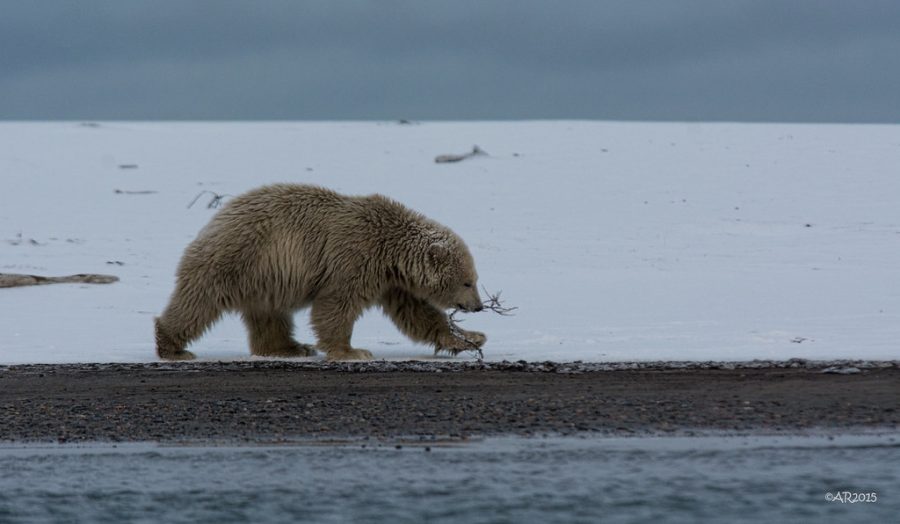What’s Happening to the Polar Bears?
Although the health of our planet has become a political debate we can no longer justify turning a blind eye when we see hopeless animals dying because of our own incompetence. Since the early 1900s because of human activities many glaciers around the world are melting at an alarming rate. Places like the Artic are being impacted the most, sea ice is shrinking 14 percent per decade and even today in the middle of a cold winter satellites show that there is 770,000 square miles less sea ice then the 1981 to 2010 median. The industrial revolution is the main reason for our environmental problems today, because of carbon dioxide and other greenhouse gasses temperatures have risen to unexpectedly high rates causing glaciers to rapidly melt and calve off into the sea. When it comes to sea ice, 95% of the oldest and thickest ice in the artic is already gone.
Because of melting ice and these tough conditions, it is likely that even more polar bears will soon starve. Polar bears are high-energy beasts and a new study shows that they actually need to eat 60% more then anyone realized. According to a unique metabolic analysis, polar bears burn 12,325 calories a day even though they spend most of their day sitting around. Polar bears whole diet rely on seals. The bears wait around for hours by seals’ cone shaped breathing holes in the sea ice, this way they can conserve their energy and still hunt for food. Anthony Pagano, a wildlife biologist with the U.S. Geological Survey even said they are far more successful doing this then any other method of hunting. That is the main reason the melting of the Artic sea ice threatens polar bear survival.
A 2010 study showed that if sea ice continues to decline it would reduce the global population of polar bears by two thirds, to less then 10,000 by the year 2050. Best estimates say that there are around 20,000-30,000 polar bears in 19 different groups or populations scattered around the globe. Four of these populations are already considered to be declining. Polar bears in the Beaufort Sea region are one of the best studied and their results show that they have decreased by 40% in the last ten years. Luckily five populations are shown to be stable, but for the other populations there seems to be not enough information to judge. In the United States, polar bears are considered endangered and are listed as “vulnerable” by the IUCN, because their sea ice habitat is being greatly effected by global warming.
Andrew Derocher, a Canadian polar bear expert and a professor at the University of Alberta conducted a short 10-day snapshot confirming that polar bears aren’t made for walking. They are not skilled walkers, but because of their nutritious diet they are able to walk around an area that is as large as 95,000 square miles, Derocher says in an interview. Polar bears can loose their weight expeditiously fast, but are able to gain it back if they catch seals. The farther the polar bears are forced to walk, the more weight they will loose. Eventually they start to loose their own muscle which hurts their chances of hunting success, that can lead to them to a downward spiral. Derocher also says polar bears are being forced to do a lot more swimming because of sea ice declines. Although polar bears are more then capable of swimming long distances they tend to burn much more calories swimming then walking. As the ice melts more and more polar bears are forced to swim more. More swimming could lead to even smaller bears, an increase of death rates, and even reduced reproduction rates.
There is no doubt that with the decline of sea ice much more polar bears are going to end up starving to death. The decline of sea ice is no ones fault but our own, if we plan to save our polar bears we should all pitch in to help. You can help the polar bears by reducing climate change. You can do this by reducing your emission of fossil fuels such as coal and oil, if you use your car less, recycle, ands use energy efficient light bulbs, we will all be able to help the polar bears one step at a time.
RELATED STORIES:















